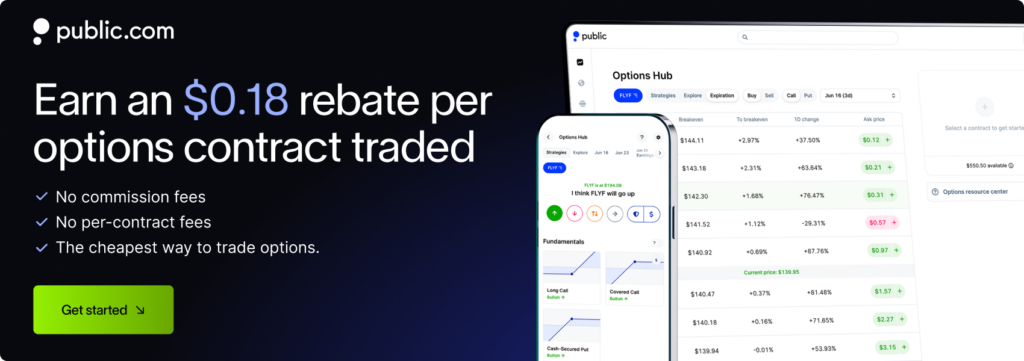Curious about how options hedging works and the strategies involved? Discover its significance while delving into its potential role in risk mitigation. The Options Clearing Corporations offers a helpful document that discusses the characteristics and risks of options, which can be found on their website.
Hedging with Options: Strategies to Protect Your Portfolio

Table of Contents
Hedging is a fundamental concept in finance and investment, typically serving as a risk management strategy. It involves reducing or mitigating potential losses from adverse price movements in financial markets. This practice generally applies when individuals and organizations aim to safeguard their portfolios.
The significance of hedging in investment portfolios is evident in its potential ability to minimize downside risk. By strategically implementing hedging techniques, investors may seek to reduce exposure to potential market instabilities, such as economic variations, unpredictable geopolitical developments, or volatile asset price movements, though it’s important to note that hedging does not guarantee protection against all risks.
Options play a vital role in hedging. These financial derivatives give the holder the right, but not the obligation, to buy or sell an underlying asset at a predetermined price within a specific time frame. Options can be sometimes used to hedge against potential losses by providing risk mitigating strategies. For example, an investor concerned about a potential decline in the value of a stock they own can purchase put options to try and limit their losses if the stock’s price falls.
In addition to options, various instruments can be utilized in hedging, such as futures contracts, insurance, stocks, and swaps. These financial tools allow investors more leeway to manage and offset risks helping to maintain stability of their investment portfolios.
How Does Hedging with Options Work
Options are considered a versatile tool for hedging risk in investment portfolios. There are primarily two types of options: call options and put options.
Call options give the holder the right to purchase an underlying asset at a predetermined strike price before a specified expiration date. These options are considered ‘in-the-money’ when the asset’s current market price exceeds the strike price. Put options, conversely, grant the holder the right to sell an underlying asset at the strike price within a given timeframe. Put options are considered in-the-money when the asset’s market price falls below the strike price.
Options that lack intrinsic value are termed ‘out-of-the-money’. Understanding this distinction between in-the-money and out-of-the-money options is crucial while crafting hedging strategies.
When it comes to hedging, put options are commonly favored due to their potential to safeguard against declining asset values. In a bearish market or when expecting a particular asset’s price to drop, put options may offer some protection by allowing the sale of the asset at a higher strike price and limiting potential losses.
Utilizing options for hedging can be associated with multiple potential benefits, including flexibility and a degree of cost-effectiveness. Options offer tailored strategies that may diversify portfolio risk, potentially requiring less initial capital compared to purchasing assets outright; however, it’s important to understand the associated risks and costs.
There are several limitations to be aware of in this context, including the cost of acquiring options as well as the potential loss of the option premium if the market behaves differently than anticipated. It’s vital to fully grasp the complexities of options and their interactions with your specific portfolio so you can potentially use them effectively for hedging.

Common Option Hedging Strategies
Here are some of the common hedging strategies with options:
-
Protective Puts
A protective put strategy involves acquiring put options to possibly mitigate a portfolio from potential losses. This approach is frequently applied when an investor anticipates a decline in the market or a specific asset while still being bullish on the stock. In such scenarios, holding put options allows selling the asset at a predetermined strike price and limiting losses. The risk with this strategy is that the buyer of the put could lose the premium they paid to purchase the option if the stock price appreciates instead of declining.
-
Covered Calls
Covered calls come into play when an investor who owns an underlying asset simultaneously sells call options on that asset. This strategy is often employed by the investors in the hope of generating potential income in a market that they perceive as neutral to a slightly bullish market. Investors may use covered calls when they believe the market or an asset is unlikely to experience significant price increases. However, the risk of this strategy is twofold: for the seller, there’s the possibility of incurring potential losses if the stock’s price rises significantly beyond the call’s strike price, while the buyer faces the potential loss of the premium paid if the stock price doesn’t rise as anticipated.
-
Collars
A collar strategy combines the purchase of protective puts with the sale of covered calls, creating a range or ‘collar’ within which an asset’s price can fluctuate. Collars are typically used when investors want to protect their holdings from substantial losses while accepting limited gains. This strategy provides a balance between protection and income generation, particularly in markets with moderate volatility. However, the risk of this strategy is twofold: the buyer of the option could lose the premium they paid to purchase the options, while a seller (writer) of the option forgoes upside stock appreciation above the strike price if assigned.
Complex Hedging Techniques
Complex hedging techniques are advanced strategies with options. Here are some of them:
-
Iron Condors
An iron condor involves selling an out-of-the-money call and put option while also buying further out-of-the-money call and put options. This strategy is typically employed when traders expect minimal price volatility. It generally involves generating potential income from premiums while benefiting from a relatively stable market, with risks limited to a predefined range. However, it’s important to note that the strategy comes with certain risks. The primary risk is that if the underlying asset experiences unexpected and significant price movements beyond the predefined range of the sold call and put options, losses can accumulate rapidly. Additionally, there’s a potential for losses due to the cost of purchasing the further out-of-the-money call and put options, which act as hedges. Traders should exercise caution and implement effective risk management practices when using iron condor strategies to mitigate these potential downsides.
-
Butterflies & Condor Spreads
Butterflies and condor spreads are options strategies that entail using multiple call and put options with different strike prices. These strategies typically aim to benefit from limited price movement and are applied when investors anticipate a market remaining within a specific range. Butterflies focus on symmetric price movements, while condor spreads encompass a broader range. They may provide potential profit opportunities in low-volatility market conditions. While such strategies aim to provide profit in low-volatility markets, they come with risks. These include limited profit potential, high transaction costs, complexity, vulnerability to time decay, potential market volatility and more. Traders must be aware of and manage these risks effectively when implementing these hedging strategies, as they are not without challenges.
Note: It is important to understand that option strategies that call for multiple purchases and/or sales of options contracts, such as the strategies listed in the sections Common Options Hedging Strategies and Complex Hedging Techniques, may incur significant transaction costs.
The Dynamics of Hedging Using Options
In the context of hedging, the significance of option premium may lie in its potential to affect the overall cost of options, which may in turn influence the effectiveness of hedging strategies. Understanding how these premiums shape risk management decisions is a crucial consideration for investors. Calculating potential ROI may involve considering the associated option costs and prospective returns. Balancing risk and premium can encompass adjusting option combinations to strike a delicate equilibrium that may help protect investments with a measure of cost control. Options hedging comes with risks like eating into profits through option premiums, overpaying for options, being vulnerable to market changes, and the chance of making wrong decisions that lead to financial losses. It’s recommended to consult with financial professionals to navigate the complexities of options hedging effectively.
What Assets Can You Hedge with Options?
You can utilize options to hedge various assets, such as shares, indices, forex, and commodities. Many online trading platforms provide opportunities to implement effective hedging strategies. For educational insights and a broader perspective on trading in other assets, platforms like Public.com can be a valuable resource to explore.
For instance, consider hedging equities with share options to mitigate potential losses in your stock holdings. Index options can offer a means to protect your portfolio from broader market fluctuations, which may be of interest to some investors. Currency options can help in managing foreign exchange risk for international businesses. Lastly, commodity options may be used to hedge against price fluctuations in raw materials like oil or gold, which can be valuable for commodity producers or consumers. However, it’s vital to understand the associated risks for both buyers and sellers of options. Buyers may risk the loss of the entire premium paid, while sellers could face potentially unlimited losses for call option sellers and potentially significant losses for put option sellers.
These strategies illustrate how investors might use options across various asset classes with the intention of managing risk exposure.

How to start your Hedging Journey with Options?
To embark on an effective options trading journey, it’s prudent to follow a structured roadmap. Start by educating yourself about options, then select a brokerage platform, create an account, and evaluate your risk tolerance. In today’s investment landscape, the role of hedging can be significant for risk management and portfolio diversification. To delve deeper into various hedging strategies, including those beyond options, and learn how to apply them, explore the resources available online such as on Public.com.
Join Public.com and start your path to informed investing today!
FAQs
What is the primary purpose of using options in hedging strategies?
Options in hedging primarily aim to limit potential losses in an investment portfolio while maintaining exposure to potential gains. While not without risk, they may help enhance risk management strategies by protecting against adverse market movements.
Are there scenarios where hedging might amplify risks?
Hedging can amplify risks when the cost, complexity of implementation, and market fluctuation of the underlying asset outweigh the potential benefits. Investors may want to seek education to navigate these intricacies.
How do protective puts and covered calls differ in hedging a portfolio?
Protective puts may help safeguard against the underlying stock price declines, while covered calls may generate income but limit potential gains in a portfolio. There is a risk of the loss of the premium paid for the option on both strategies and the choice between the two depends on an investor’s risk tolerance and investment objectives.
How can beginners effectively hedge their investments using options?
Beginners may start by learning options basics, practicing with virtual accounts, and gradually executing simple hedging strategies. Join Public.com to begin your investment journey.
How frequently should an investor review their hedging positions using options?
Investors should regularly review their hedging positions as market conditions change or when original assumptions no longer hold. Consistently monitoring your positions allows you to adapt to evolving market dynamics effectively.
How does currency options hedging protect against forex volatility?
Currency options hedging allows businesses to set predetermined exchange rates, potentially helping them to reduce the effect of unfavorable currency movements that may affect profitability. However, it’s important to note that with this strategy, buyers might risk the loss of the entire premium they’ve paid for the option.
For a deeper dive into currency options and hedging, explore our resources on Public.com.